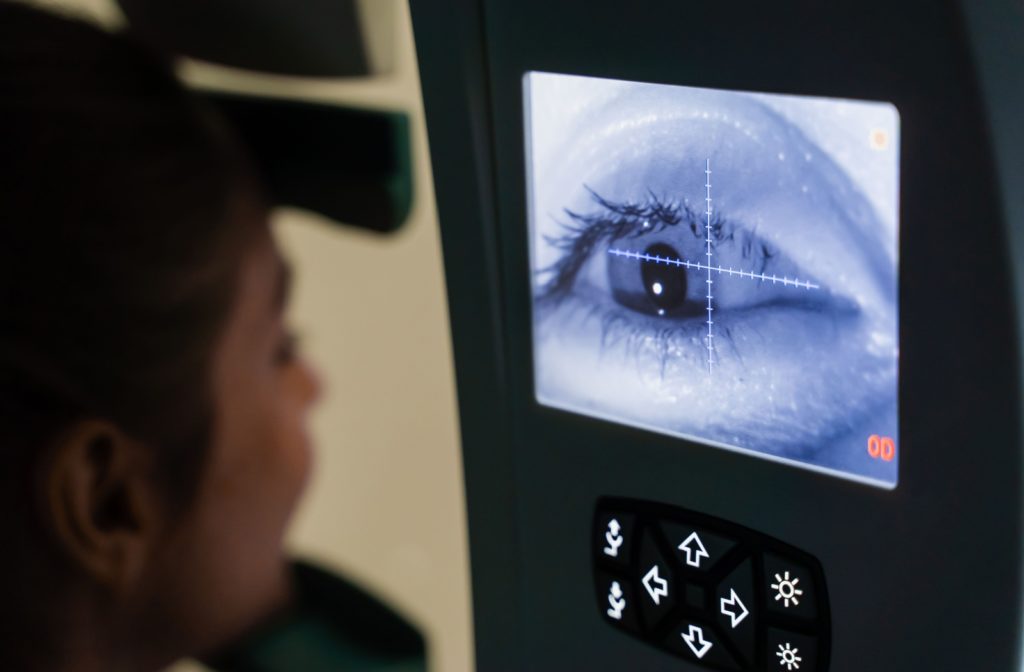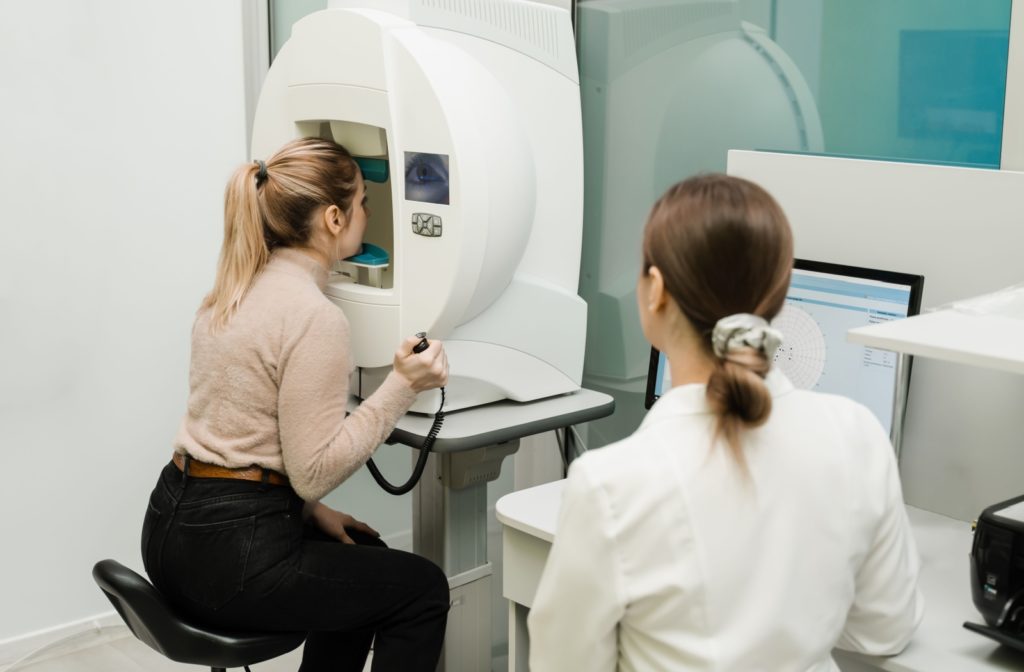A vision field test is an essential diagnostic tool that eye health professionals use to assess your vision field. Your field of vision is the area your eyes can see when looking straight ahead, including your peripheral or side vision. This test helps identify any blind spots, vision loss, or abnormalities that may indicate underlying eye conditions or health issues.
If you’re keen on maintaining your eye health or experiencing changes in the way you see, a vision field test is a critical component of your eye care routine. But what exactly does the test entail, and why is it so important? Let’s explore.
Why is Your Field of Vision Important?
Field of vision refers to the complete area visible when your eyes are focused on a central point. This includes both central and peripheral (side) vision. While most of us focus on our central vision for reading, driving, or watching TV, our peripheral vision plays an equally vital role in ensuring spatial awareness and visual clarity.
Blind spots or reduced field of vision could significantly impact daily activities and may even signal serious eye or neurological conditions.
What Does a Vision Field Test Measure?
A vision field test measures:
- Peripheral vision – How well you can see objects or movements outside your direct line of sight.
- Blind spots – Gaps in vision that might indicate optic nerve issues or retinal damage.
- Sensitivity to light – An important marker for detecting certain conditions like glaucoma.
- Damage to the visual pathway – Including areas like the retina, optic nerve, or brain.
Eye care specialists use the test results to diagnose conditions such as glaucoma, macular degeneration, retinal diseases, or neurological disorders like stroke or brain injuries.
Types of Vision Field Tests
Eye care professionals may use different methods to evaluate your vision, depending on your symptoms or specific needs. Here are the most common types of vision field tests:
1. Confrontation Visual Field Exam
The simplest of all field tests, this involves covering one eye and focusing on an object directly in front of you. The examiner will ask you to identify objects or movements in your peripheral vision. While this is a basic test, it can quickly flag areas of concern that may require further testing.
2. Automated Perimetry
This computerized test uses lights flashing in different areas of your visual field. Each time you see a light, you press a button. This test provides a detailed map of your vision field and is commonly used to detect glaucoma and other eye diseases.
3. Kinetic Perimetry
Kinetic perimetry uses a light or object that is moved from the outer edge of your vision to the center. This measures both the range and sensitivity of your vision. It’s particularly effective in assessing peripheral vision loss.
4. Amsler Grid
Widely used for individuals with macular degeneration, this test involves looking at a grid of straight lines to detect any wavy or blank areas in your central vision.

Why is a Vision Field Test Important?
A vision field test isn’t just about ensuring your eyesight is sharp; it can provide crucial insights into your overall health. Here’s why it matters:
- Detects chronic eye diseases: Conditions like glaucoma can cause irreversible vision loss if caught late. A field test can identify early signs and allow proactive treatment.
- Monitors neurological health: Vision field defects are often associated with strokes, brain tumors, or other neurological conditions. Identifying them early can save lives.
- Evaluates visual functionality – Peripheral vision is essential for activities like driving or navigating crowded spaces. Any impairment can increase the risk of accidents.
- Guides tailored treatments: Whether you need prescription glasses, eye surgery, or medications, the test ensures accurate treatment based on your specific needs.
The Procedure: What to Expect During a Vision Field Test
A vision field test is non-invasive, pain-free, and usually conducted in your optometrist’s office. Depending on the method used, the test can take anywhere from a few minutes to about an hour. Here’s what to expect:
Step 1. Preparation
Your eye care professional will explain the test and may ask you to remove glasses or contacts depending on the type of test.
Step 2. Testing Your Vision
You’ll focus on a central point while responding to lights, objects, or movements appearing in your field of vision. Stay as relaxed as possible—accurate responses ensure reliable results!
Step 3. Analyzing Results
Your optometrist will review the results, which often come in the form of a visual field map. Any abnormalities may lead to further testing or prompt treatment recommendations.
Maintaining Eye Health Through Regular Vision Checks
Field tests are just one piece of the puzzle when it comes to maintaining optimal eye health. Pairing these tests with comprehensive eye exams provides a full picture of your vision and overall health. Routine tests help detect issues early, allowing for timely intervention and prevention of potential vision loss.
Even if you aren’t experiencing symptoms, scheduling regular appointments with your optometrist can significantly improve your long-term eye health.
Schedule Your Vision Screening Today!
If you’re experiencing changes in your vision or just want to ensure your eyes are in good health, the experienced team at Total Vision La Mesa is here to help. Conveniently located in La Mesa, CA, we prioritize your eye health with comprehensive vision screenings and advanced diagnostic technology.
Take control of your eye health today by scheduling an appointment with us. Visit Total Vision La Mesa or call us to book your next visit. Your vision deserves the best care possible!



